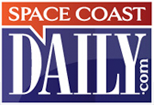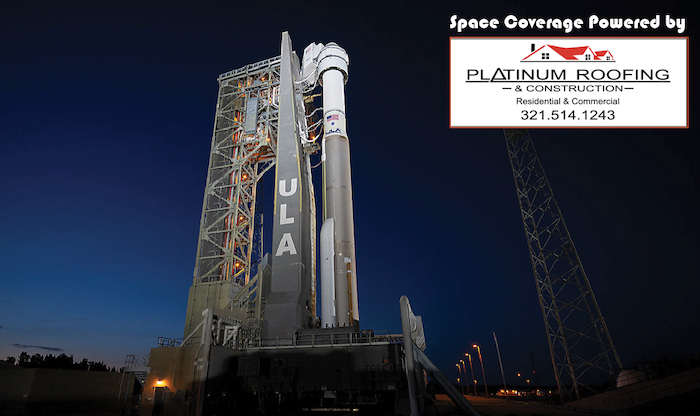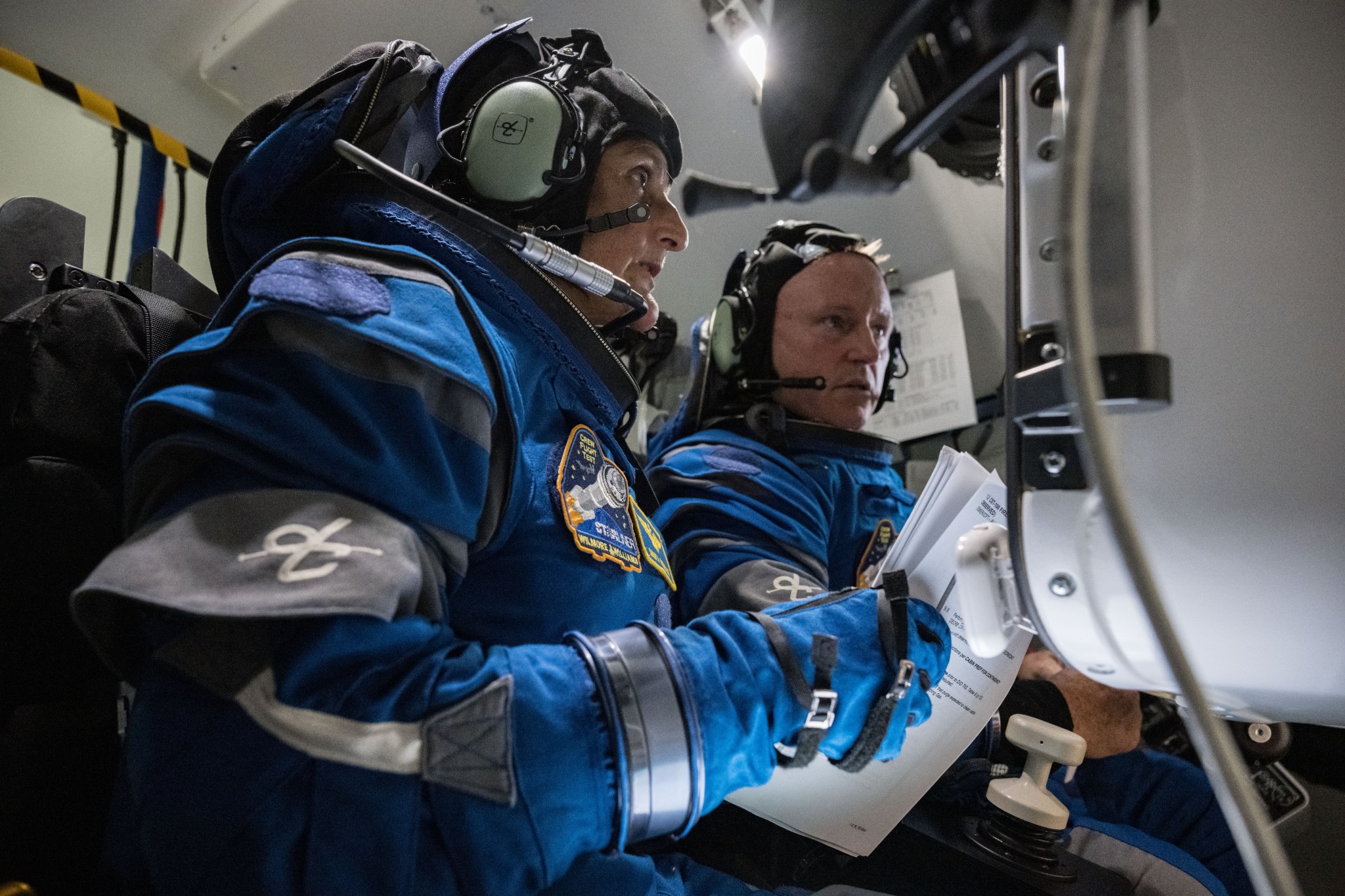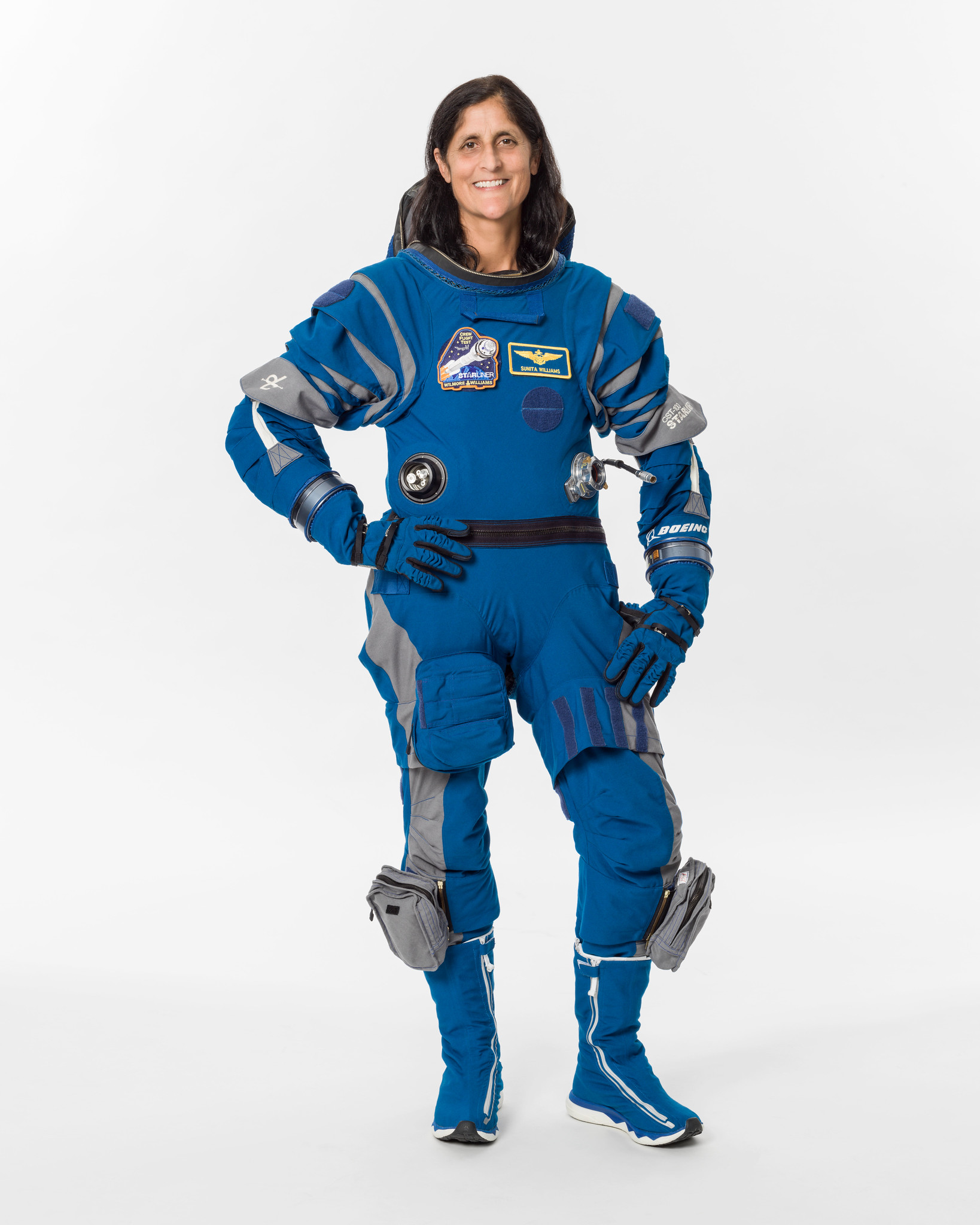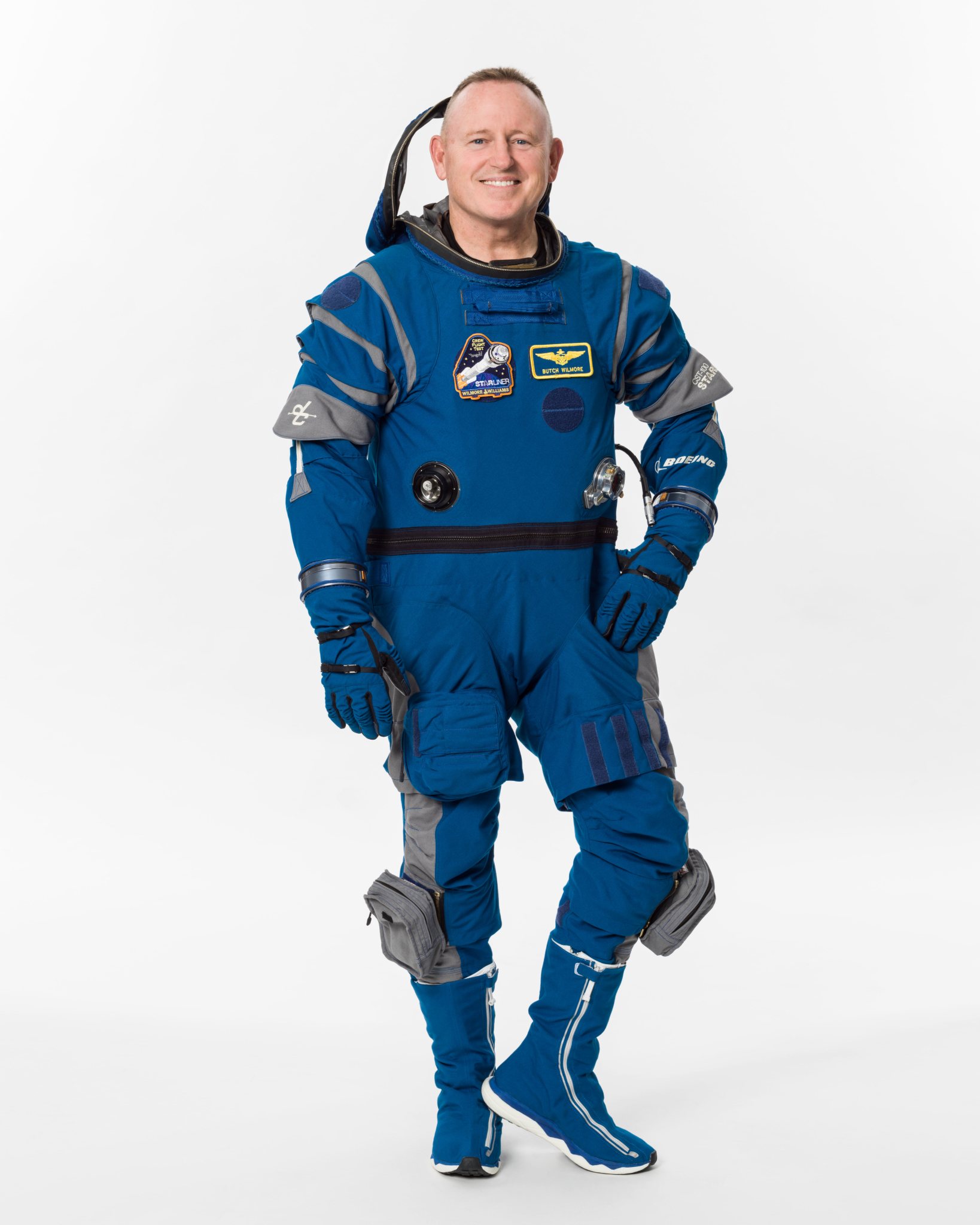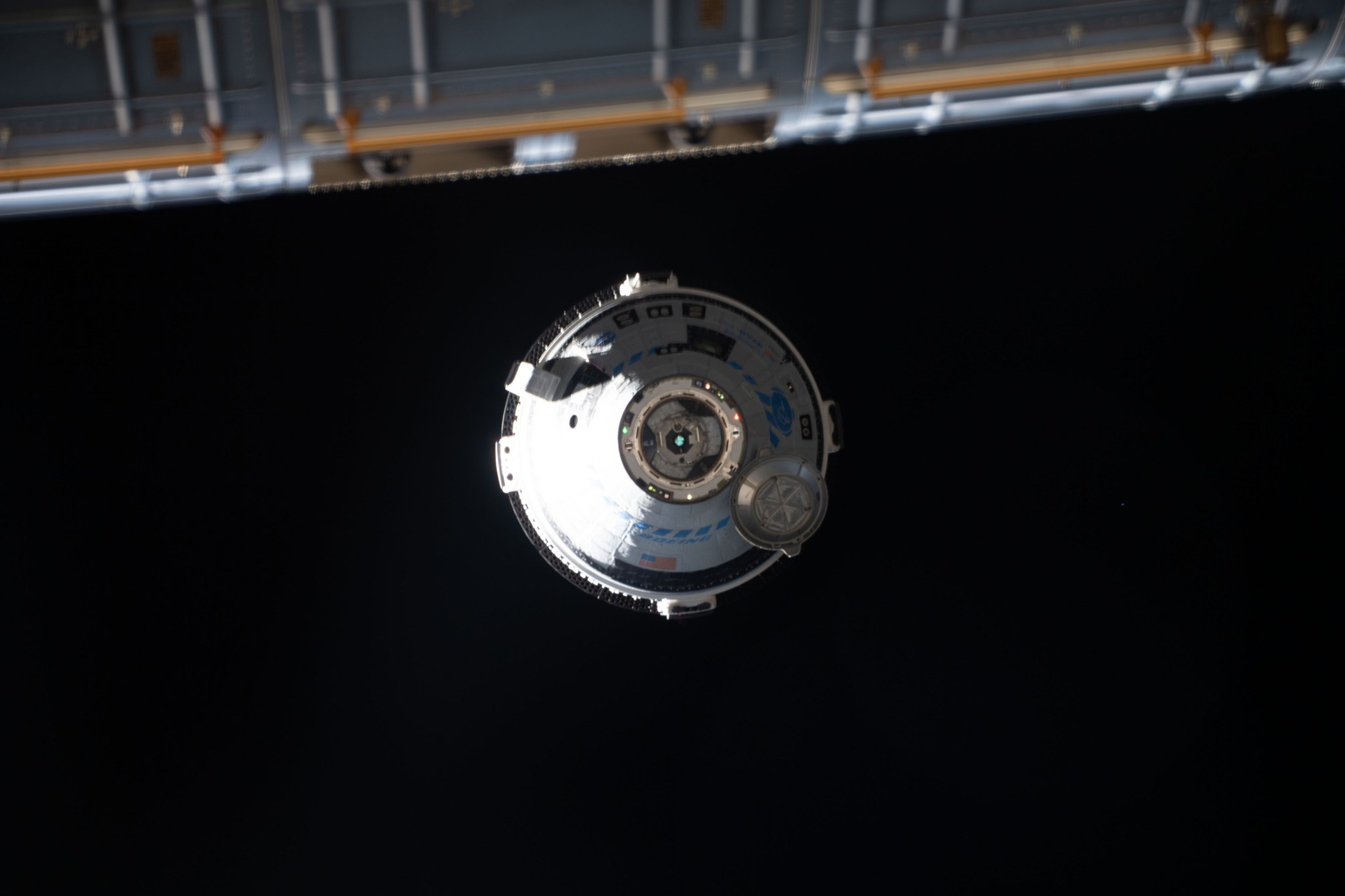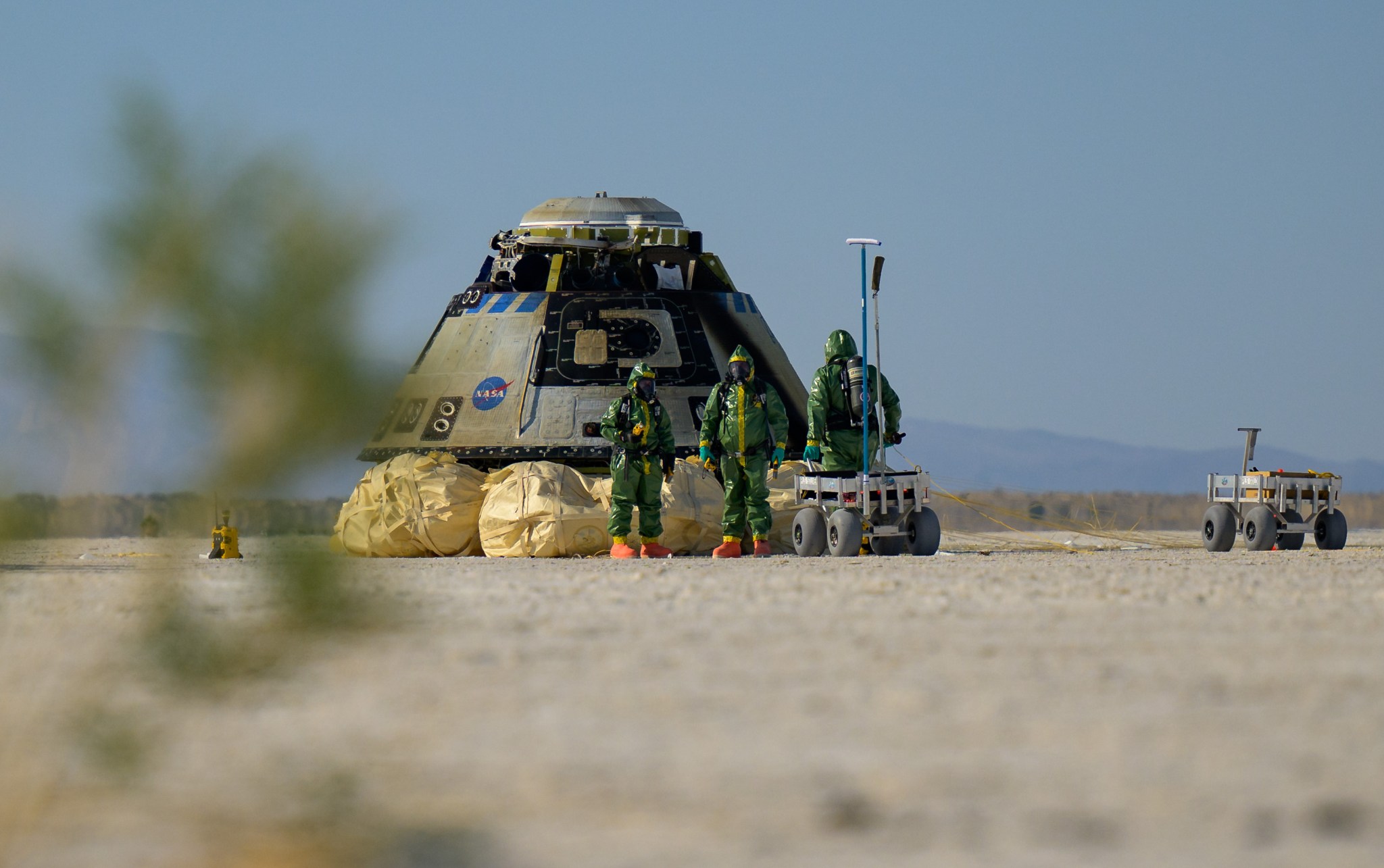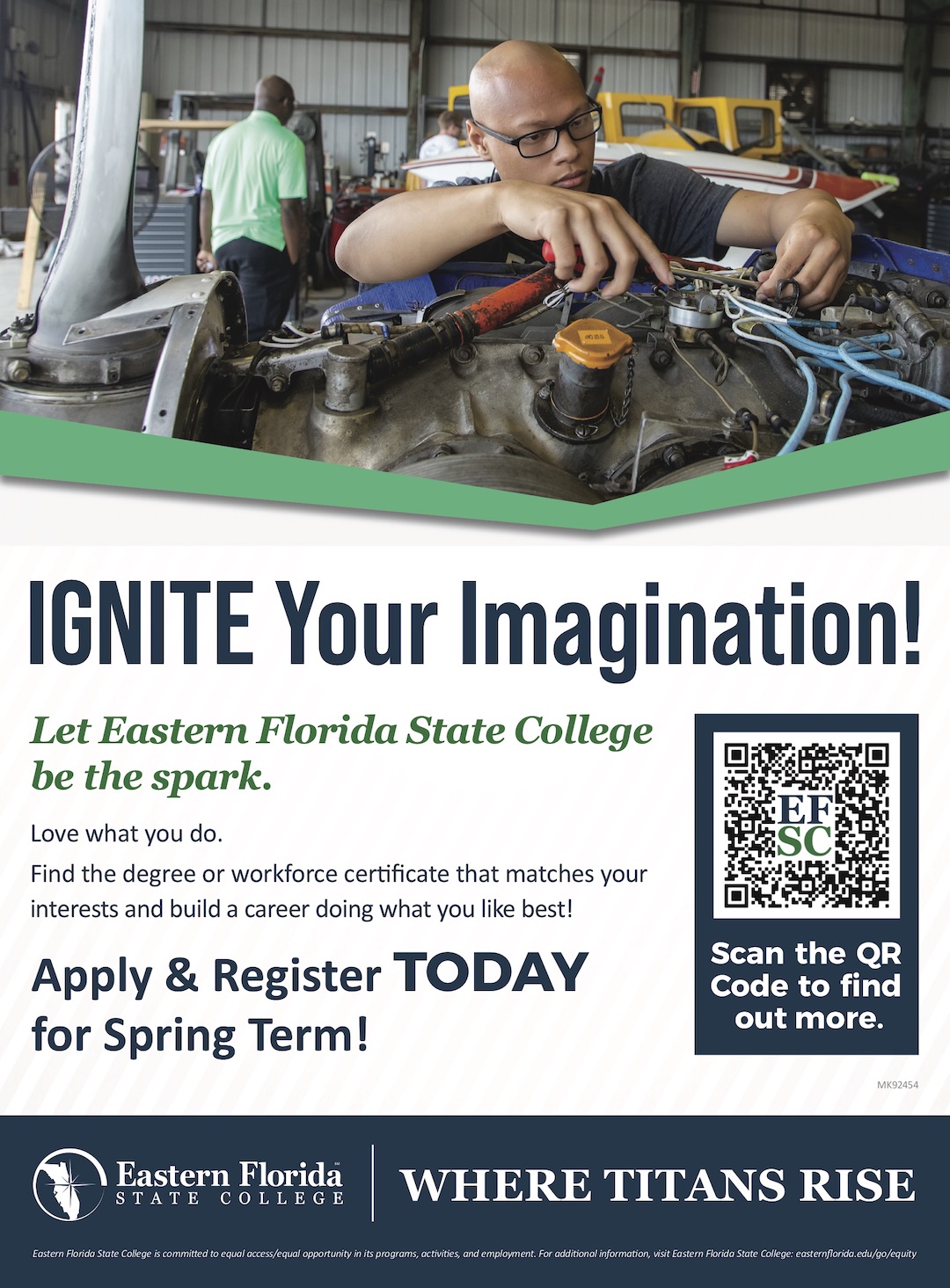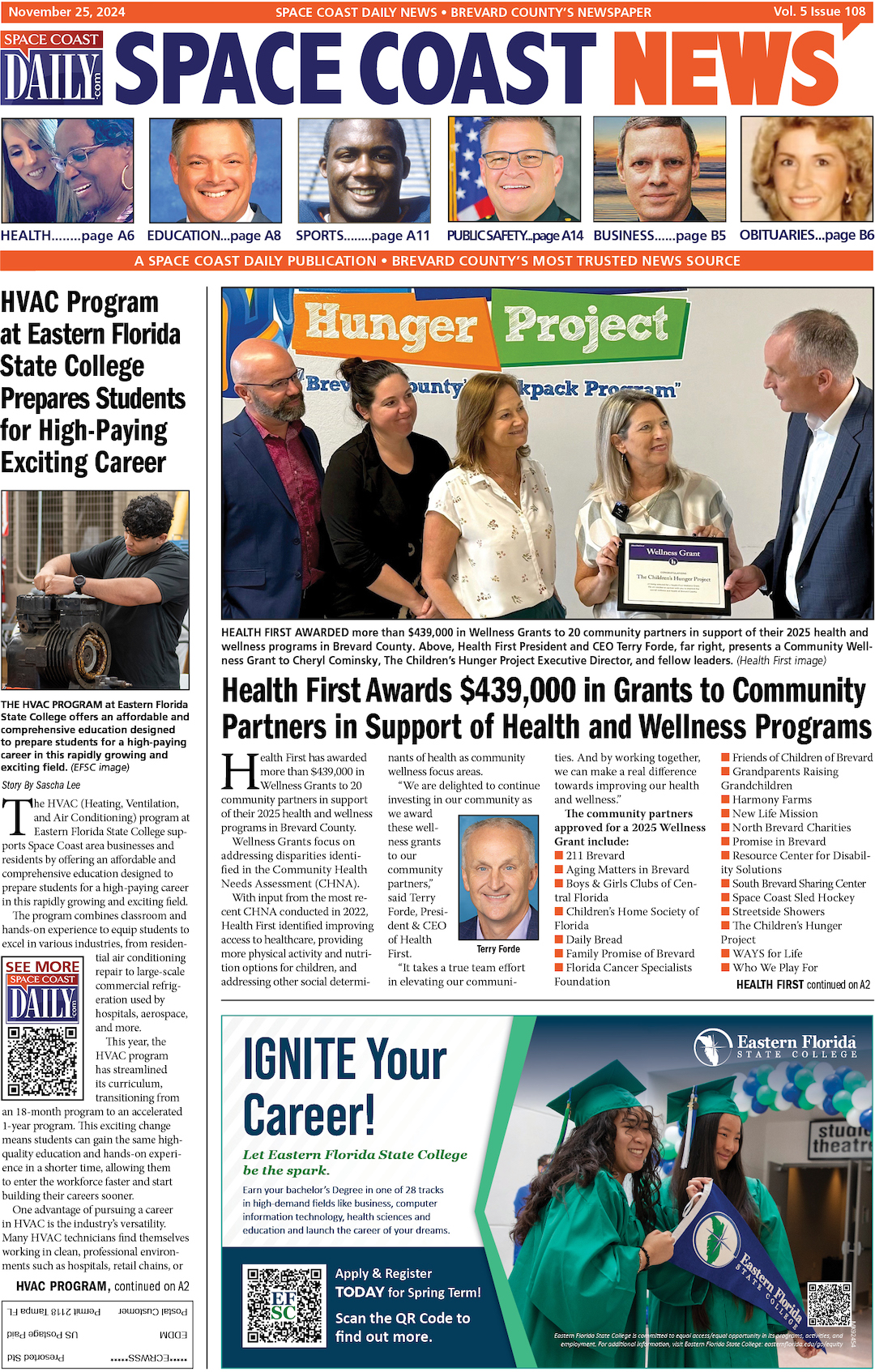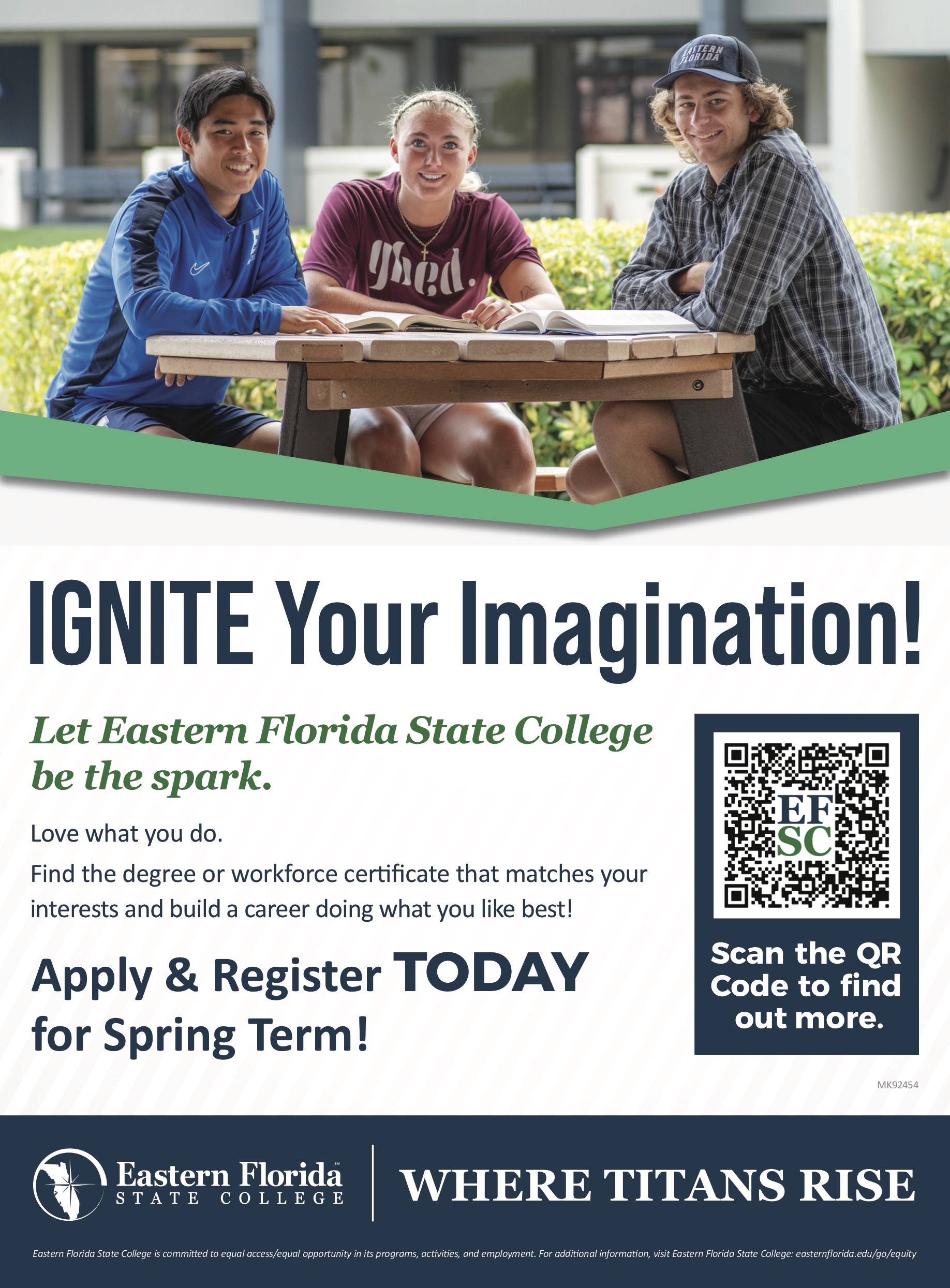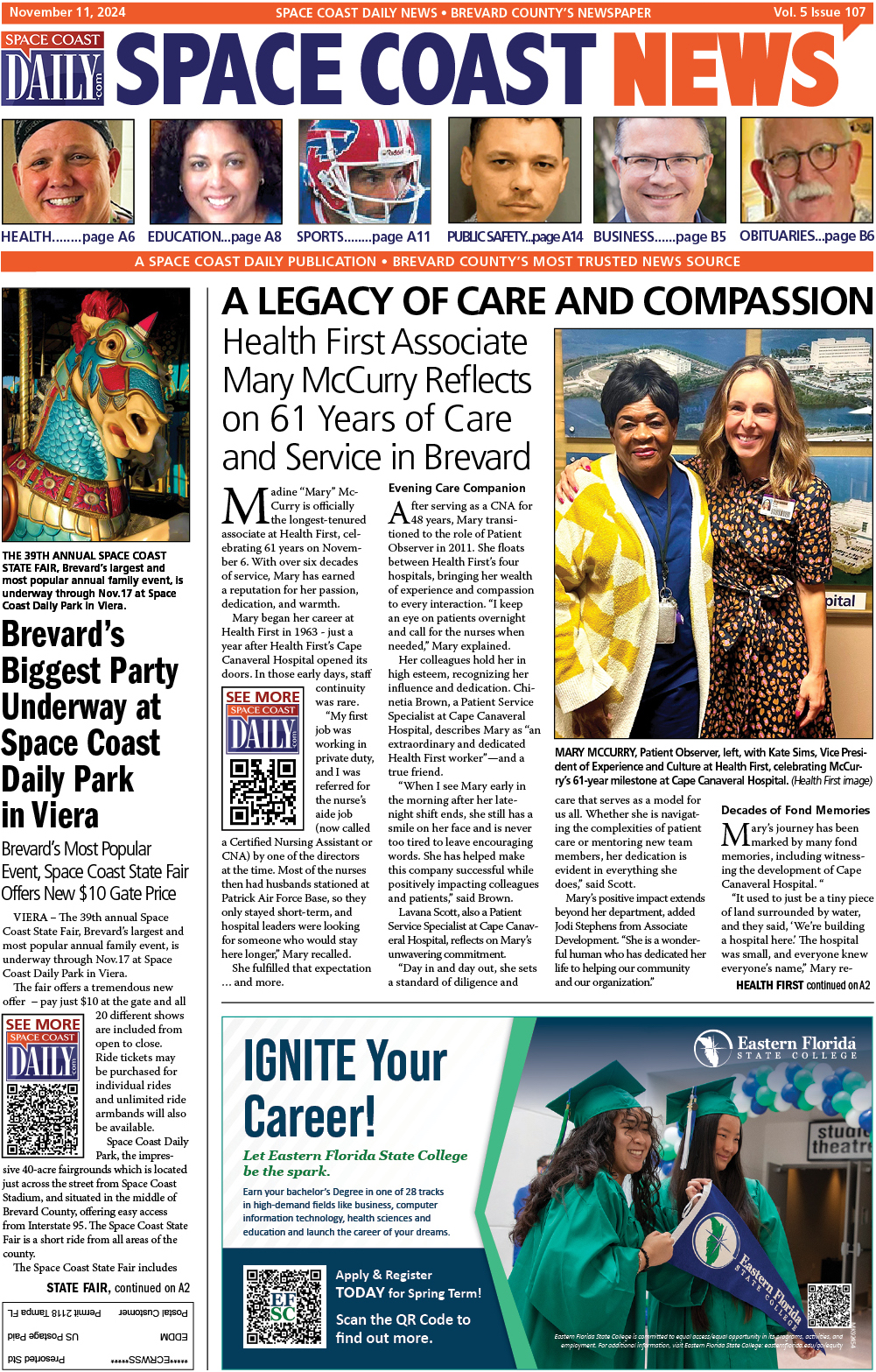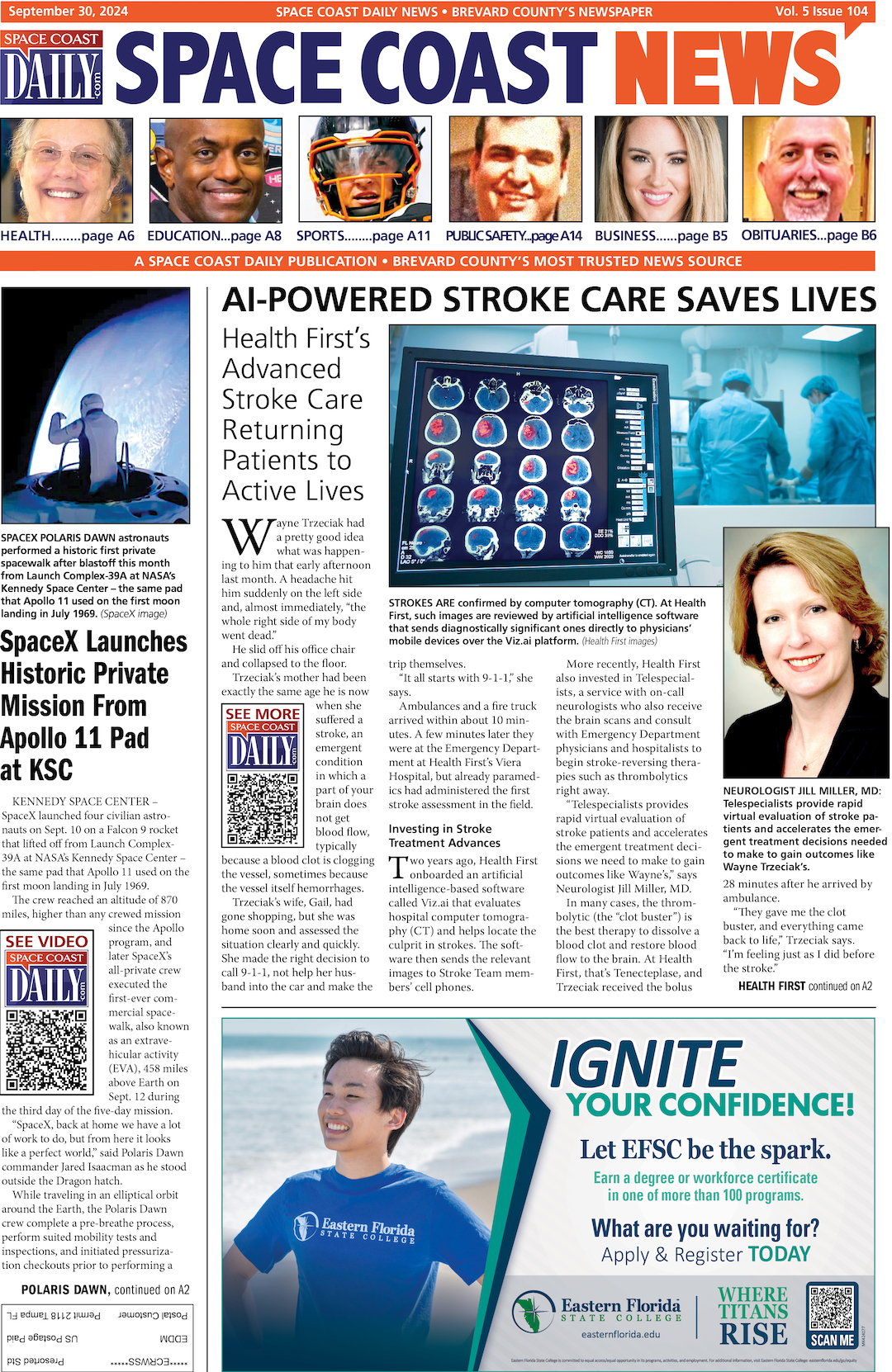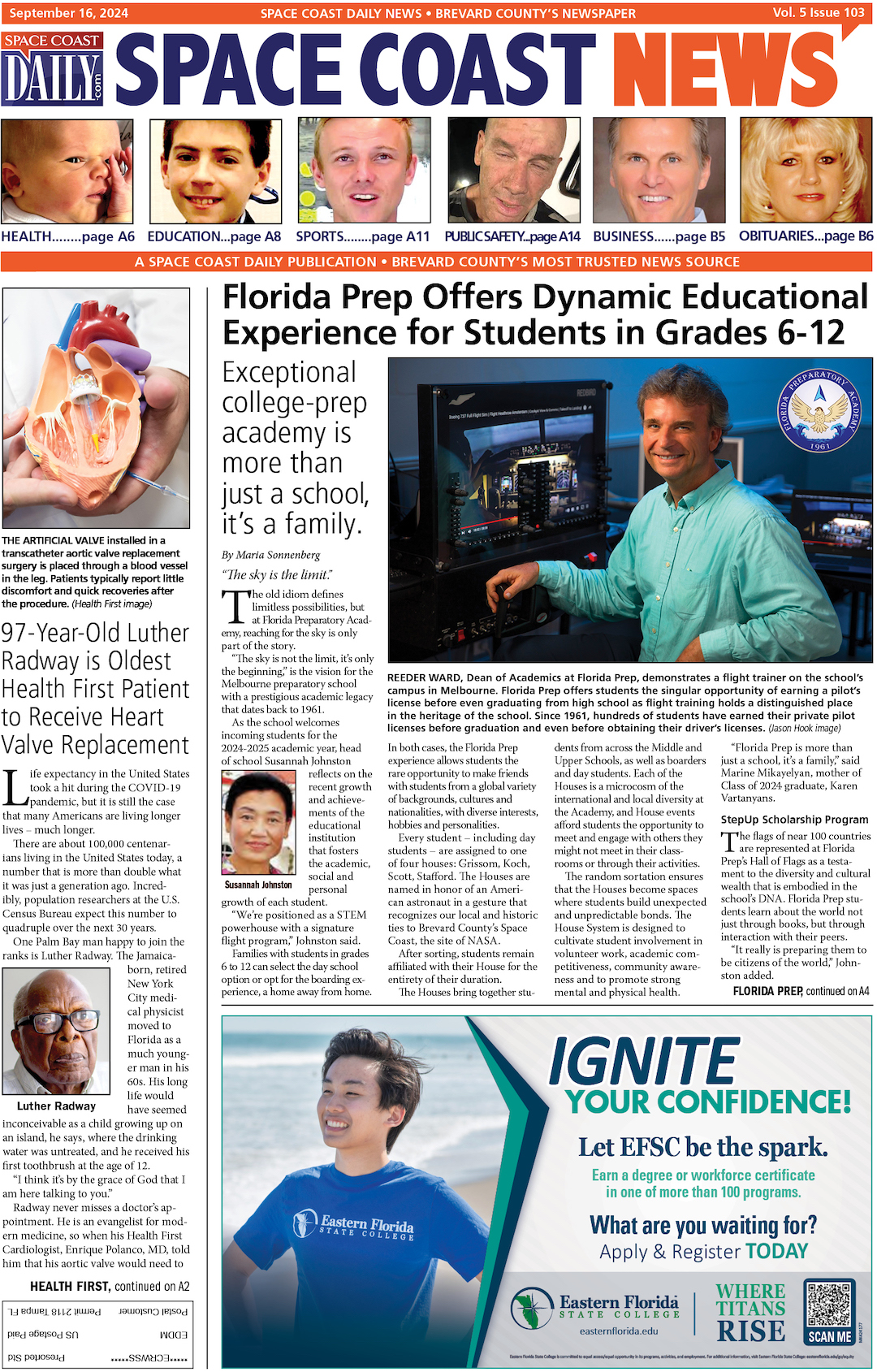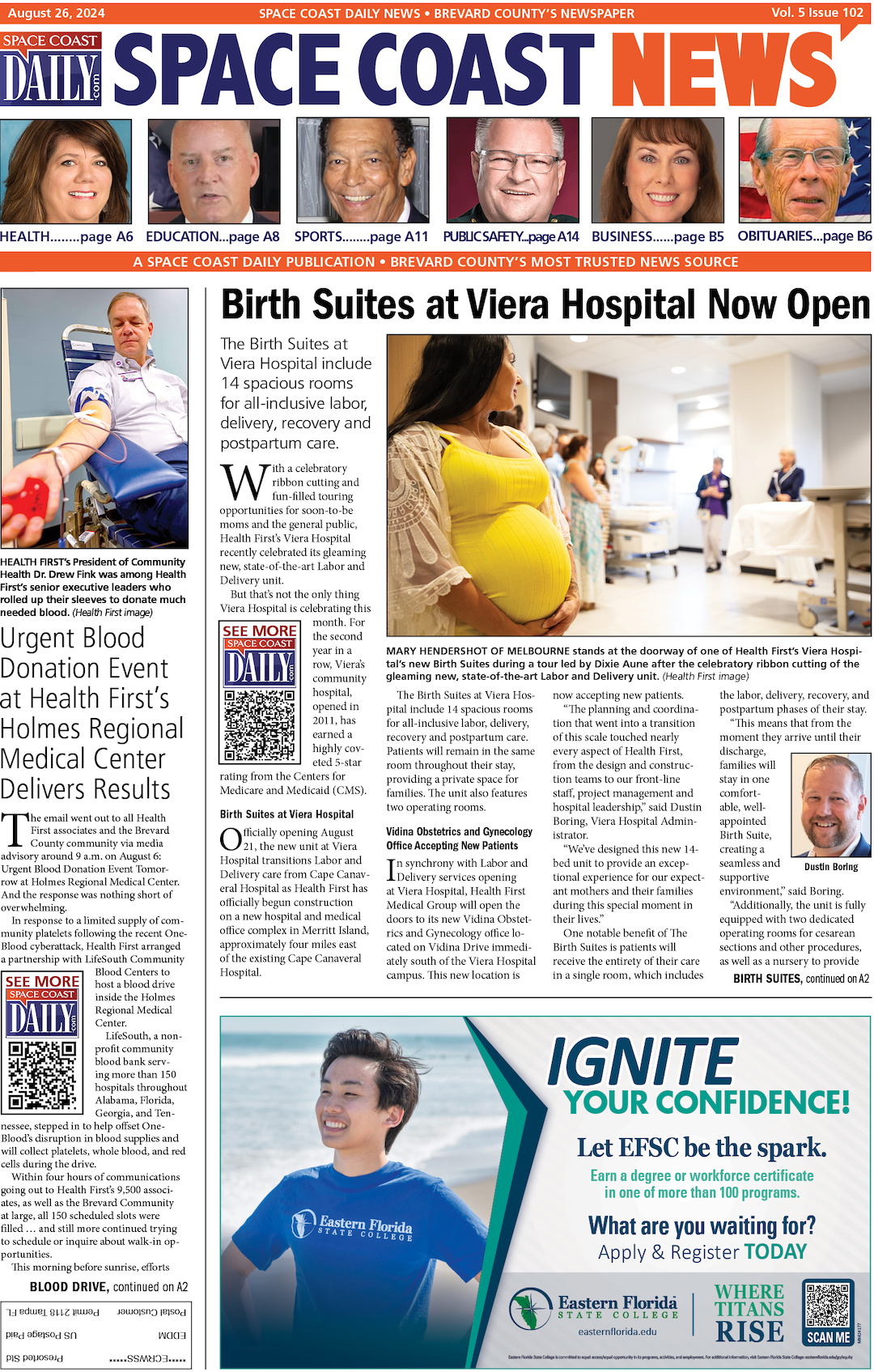WATCH LIVE: ULA Boeing Starliner Spacecraft Ready to Liftoff Saturday Afternoon from Cape Canaveral Space Force Station
By Space Coast Daily // June 1, 2024
coverage of the launch can be seen on Space Coast Daily TV
WATCH LIVE: ULA Boeing Starliner Spacecraft Ready to Liftoff Saturday Afternoon from Cape Canaveral Space Force Station.
The Starliner mission is set to liftoff at 12:25 p.m. on Saturday, June 1, from Cape Canaveral Space Force Station.
BREVARD COUNTY • KENNEDY SPACE CENTER, FLORIDA – BREVARD COUNTY • CAPE CANAVERAL, FLORIDA — The Boeing Starliner spacecraft is set for a historic and long-awaited astronaut demo launch Saturday at 12:25 p.m. on a United Launch Alliance Atlas V rocket from Space Launch Complex 41 at Cape Canaveral Space Force Station.
You can watch the launch on Space Coast Daily TV.
“I’m very proud of the teams who have worked really hard the last two and a half weeks to prepare for launch,” said Steve Stich, manager, NASA’s Commercial Crew Program. “We’re really ready to go fly.”
Launch weather officers with the U.S. Space Force’s 45th Weather Squadron predict a 90% chance of favorable weather conditions for the launch, with ground winds and the cumulus cloud rule being the primary weather concerns.
The integrated ULA Atlas V rocket and Starliner spacecraft stack rolled out to the pad at Space Launch Complex-41 at Cape Canaveral Space Force Station in preparation for liftoff. Meanwhile, Wilmore and Williams have remained in preflight quarantine inside the Neil A. Armstrong Operations and Checkout Building following their return to the Florida spaceport.
“We look forward to flying this mission. This is a test flight; we know we’re going to learn things,” said Mark Nappi, vice president and program manager, Commercial Crew Program, Boeing. “We are going to improve, and that improvement starts with the Starliner-1 mission and it will be even better than the mission we’re about to fly.”
The mission will send Wilmore and Williams to the orbiting laboratory for about a week before Starliner makes a parachute and airbag-assisted landing in the southwestern United States.
This is the first mission for the Starliner spacecraft with a crew on board, which includes the veteran duo of NASA astronauts Butch Wilmore and Suni Williams, who will be on a week-long test flight to the International Space Station. Both Wilmore and Williams are retired U.S. Navy captains who have spent time on the ISS.
Williams will be the pilot for flight test. Williams has spent 322 days in space across two missions: Expedition 14/15 in 2006 through 2007, and Expedition 32/33 in 2012. The Massachusetts native also conducted seven spacewalks, totaling 50 hours and 40 minutes.
Before her career began with NASA in 1998, Williams graduated with her bachelor’s degree in Physical Science from the U.S. Naval Academy, before obtaining her master’s degree in Engineering Management from the Florida Institute of Technology in Melbourne. In total, she has logged more than 3,000 flight hours in over 30 different aircraft.

The two NASA astronauts are set to make history as the first members aboard Boeing’s Starliner spacecraft to the International Space Station.
As the final flight test for Starliner, NASA’s Boeing Crew Flight Test will validate the transportation system, including the launch pad, rocket, spacecraft, in-orbit operational capabilities, and return to Earth with astronauts aboard.
NASA astronauts Butch Wilmore and Suni Williams will fly Starliner, lifting off aboard ULA’s (United Launch Alliance) Atlas V rocket from Space Launch Complex-41 at Cape Canaveral Space Force Station in Florida, for about a one week stay aboard the space station. The Starliner and crew will land under parachutes and an airbag-assisted landing in the western United States.
This is Boeing’s second flight to the International Space Station and third Starliner flight test overall, following a second Orbital Flight Test, the uncrewed mission also known as OFT-2, in May 2022. Boeing also completed pad abort demonstration in November 2019.
The Crew
Suni Williams: Williams will be the pilot for flight test. Williams has spent 322 days in space across two missions: Expedition 14/15 in 2006 through 2007, and Expedition 32/33 in 2012. The Massachusetts native also conducted seven spacewalks, totaling 50 hours and 40 minutes.
Before her career began with NASA in 1998, Williams graduated with her bachelor’s degree in Physical Science from the U.S. Naval Academy, Annapolis, Maryland, before obtaining her master’s degree in Engineering Management from the Florida Institute of Technology, Melbourne. In total, she has logged more than 3,000 flight hours in over 30 different aircraft.
Butch Wilmore: Wilmore will be the commander for the mission. A veteran of two spaceflights, Wilmore has 178 days in space under his belt. In 2009, he served as a pilot aboard space shuttle Atlantis for STS-129. Additionally, Wilmore served as a flight engineer for Expedition 41 until November 2014, when he assumed command of the station upon arrival of the Expedition 42 crew. He returned to Earth the following March.
Prior to being selected by NASA in 2000, the father of two obtained both his bachelor’s degree and master’s degree in Electrical Engineering from Tennessee Technological University, Cookeville, before graduating with another master’s degree in Aviation Systems from the University of Tennessee, Knoxville.
He is also a graduate of the United States Naval Test Pilot School, Patuxent River, Maryland, and has completed four operational deployments during his tenure as a fleet naval officer and aviator.
After launch from Space Launch Complex-41 and separation from ULA’s Atlas V rocket, Starliner will perform an engine burn to place the spacecraft and its crew into orbit for an approximately 24-hour journey to the space station.
During the flight, the spacecraft and its crew will perform several flight test objectives, supporting the certification ahead of regular rotation missions for Starliner. The first test is to demonstrate performance of crew equipment from prelaunch through ascent, including suit and seat performance.
During approach, rendezvous, and docking with the station, the Starliner team will assess spacecraft thruster performance for manual abort scenarios, conduct communication checkouts, test manual and automated navigation, and evaluate life support systems. Crew aboard the station will monitor the spacecraft’s approach and the Starliner crew would command any necessary aborts.
Starliner will autonomously dock to the forward-facing port of the Harmony module. The test objective is to perform hatch opening and closing operations, configure the spacecraft for its time docked to the station, and transfer emergency equipment into the station. During its stay, the crew will evaluate the spacecraft, its displays, and cargo transfer systems.
Wilmore and Williams will also go inside Starliner, close the hatch, and demonstrate the spacecraft can perform as a “safe haven” in the case one is needed in the future. Visiting spacecraft can be used as safe havens in the event of a contingency aboard the space station, such as depressurization, fire, or risk of collision with orbital debris.
Wilmore and Williams will live and work alongside the Expedition 71 crew for about a week before boarding Starliner for return to Earth. After undocking, the next flight test objective will assess manual piloting of Starliner before switching back to autonomous operations. The crew will spend approximately six hours in the spacecraft from undocking until its first landing opportunity.
During re-entry to Earth’s atmosphere, the spacecraft will begin to slow down from orbital velocity at 17,500 miles per hour, and the crew could feel loads up to 3.5 g. The spacecraft’s forward heat shield will be jettisoned after re-entry, having completed its work protecting the parachute system, and two drogue and three main parachutes will further slow Starliner’s descent.
The base heat shield will deploy, exposing the dual airbag system. The six primary airbags will deploy at the base of the capsule, cushioning its landing at approximately 4 mph in the western United States. Potential landing locations include two targets in the vast White Sands Missile Range, New Mexico; Willcox, Arizona; Dugway Proving Ground, Utah. Edwards Air Force Base in California is available as a contingency landing site.
After touchdown, the crew aboard Starliner is responsible for jettisoning the parachutes, initiating spacecraft power down, and conducting a satellite phone call with the mission control landing and recovery teams. The landing and recovery team will use sensors to check for lingering hypergolic propellant traces and electrically ground the command module before other team members approach.
Recovery crews will raise a tent around Starliner and pump cool air into the spacecraft. A mobile access platform is positioned in front of the spacecraft’s hatch and a medical support vehicle will move into position.
Once Starliner’s hatch is opened, with less than one hour having passed since landing, the astronauts will move to the medical vehicle for initial health checks. A ground team will begin an early cargo transfer, removing experiments from the spacecraft to transport to NASA’s facilities. Wilmore and Williams will fly on a nearby helicopter for transportation to a NASA aircraft that will return them to Ellington Field in Houston.
Following a landing and successful recovery, NASA will complete work to certify the spacecraft as an operational crew system for long-duration rotation missions to the space station, beginning with NASA’s Boeing Starliner-1 expected to launch in 2025.
NASA’s Commercial Crew Program is working with the American aerospace industry to launch astronauts on American rockets and spacecraft from American soil to the International Space Station. This innovative approach is helping the agency maintain a human presence in low Earth orbit and enable exploration to the Moon in preparation for Mars for the benefit of humanity.
